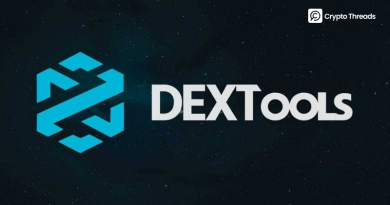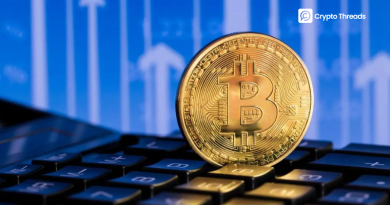Crypto Slang Decoded: 30 Essential Terms You Should Know
The crypto industry is fast-paced, complex, and filled with unique slang that can be intimidating for newcomers. From investing behaviors to technical concepts, understanding crypto-specific terminology is crucial for navigating the market confidently and avoiding costly mistakes.
This guide defines 30 common crypto slang terms, categorized and accompanied by real-world examples for practical application.
Investor Behavior and Sentiment
1. Ape
To “ape” into a project means jumping into a crypto investment without doing any real research and usually because everyone else is talking about it.
For example, many investors impulsively bought SafeMoon due to its TikTok virality in 2021. The token’s value surged temporarily before plummeting over 90%, leading to significant losses for those who invested late without understanding its liquidity trap or tokenomics.
Why it matters: Aping can be effective in meme culture, but it is risky in the long term. You’re essentially gambling on hype.
2. HODL (Hold On for Dear Life)
Initially an accidental misspelling on a Bitcoin forum in 2013, HODL has since been adopted as a guiding principle by long-term investors who decline to sell during market downturns.
Example: Bitcoin experienced a decline of over 80% from $20,000 in 2017 to approximately $3,200 in 2018. Investors who maintained their holdings throughout this bear market witnessed BTC reach $69,000 merely three years thereafter.
Key takeaway: The HODLing strategy is effective when one maintains conviction in long-term value and possesses the resilience to endure short-term volatility.
3. Diamond Hands / Paper Hands
In the fast-paced world of investments, there are two main types of investors:
- Diamond hands refers to those who hold onto their investments, even when prices are all over the place. They don’t panic.
- Paper hands describe investors who get scared and sell their assets at the first sign of a market dip.
Example: A great example of “diamond hands” was seen during the GameStop stock craze (though this wasn’t about crypto). Online communities, especially on Reddit, rallied together, encouraging “diamond hands” to put pressure on hedge funds that had bet against the stock.
4. FOMO (Fear of Missing Out)
FOMO stands for “Fear of Missing Out.” It describes the emotional reaction that occurs when you see others making profits and feel pressured to join in — usually without fully understanding the investment. In crypto, FOMO often kicks in during rapid price surges or when a particular coin is trending on social media. You might see people posting huge gains, influencers hyping it up, or a coin suddenly breaking all-time highs, and feel like you’re missing an opportunity that “everyone else” is benefiting from.
This fear can cause investors to rush into buying at inflated prices, thinking the asset will continue to rise. But more often than not, they’re buying at the top — just before the price corrects.
Example: In late 2021, Bitcoin surged to nearly $69,000. News outlets, celebrities, and influencers were celebrating new highs. Many first-time investors, afraid of missing out on future profits, bought in near the peak. Within months, BTC dropped below $35,000, leaving those who bought at the top with major losses
Lesson learned: Markets move in cycles. FOMO tends to make you buy the top and sell the bottom.
5. FUD (Fear, Uncertainty, Doubt)
FUD stands for “Fear, Uncertainty, and Doubt.” It refers to the spread of negative information — whether false, exaggerated, or even technically accurate — with the intent or effect of causing fear and market hesitation. In the crypto world, FUD often takes the form of alarming headlines, misleading tweets, or half-truths that circulate quickly and influence public sentiment. Sometimes, FUD is spread deliberately to shake out weak hands, manipulate prices, or promote an opposing narrative. Other times, it’s simply the result of misinformed reporting or reactionary thinking.
6. Bearish
A bearish market is characterized by a prolonged period of falling asset prices, signaling a widespread lack of confidence among investors. This negative sentiment isn’t just a fleeting mood; it becomes a self-reinforcing cycle. As prices continue their downward trajectory, investors become increasingly pessimistic, anticipating further depreciation. This expectation, in turn, influences their behavior: they either hold back from making new purchases, fearing that their investments will lose value, or they actively sell off their existing holdings to cut losses or avoid larger ones. This selling pressure further contributes to the decline in prices, deepening the bear market. The lack of buying interest, coupled with increased selling, creates an imbalance in supply and demand, where supply significantly outweighs demand, driving prices even lower.
Example: In 2022, the crypto market entered a bearish cycle when Bitcoin dropped from over $60,000 to below $20,000.
7. Bullish
A bullish trend in a market signifies a period of sustained price increases across a range of assets, reflecting robust investor optimism and a prevailing sense of confidence in the economic outlook. This positive sentiment fuels heightened demand as buyers outnumber sellers, driving prices upward. The consistent upward trajectory of prices can be attributed to several factors, including strong corporate earnings, favorable economic indicators such as low unemployment and GDP growth, and expansionary monetary policies.
As prices climb, investors are often encouraged to enter the market, anticipating further gains. This influx of capital creates a self-reinforcing cycle, pushing asset valuations higher. The strong investor confidence is often contagious, leading to a “fear of missing out” (FOMO) among those who have not yet invested, further accelerating demand. This period is characterized by a general belief that prices will continue to rise, making it an opportune time for investors to accumulate assets. Bull markets are typically identified by a significant rise from previous lows, often defined as a 20% or more increase from a market trough. While periods of consolidation or minor pullbacks may occur, the overarching trend remains positive, with each subsequent low higher than the last.
Example: From March 2020 to November 2021, Bitcoin’s rise from $4,000 to $69,000 was a classic bullish trend.
8. Cryptosis
This describes the ceaseless urge that consumes individuals, driving them into a perpetual cycle of obsessive market monitoring. It manifests as a constant compulsion to meticulously check fluctuating prices across platforms, often leading to FOMO.
Furthermore, this urge extends to an insatiable appetite for knowledge, compelling individuals to delve deep into intricate whitepapers, dissecting complex technical specifications and economic models in a desperate attempt to gain a perceived informational edge. Finally, a significant component of this phenomenon involves the magnetic pull towards numerous digital communities, specifically Telegram groups, where individuals immerse themselves in a constant deluge of speculative chatter, rapid-fire news updates, and unverified rumors, all in a desperate bid to stay ahead of the curve in a volatile and rapidly evolving landscape.
Example: If you’ve stayed up past midnight to track gas fees or watched 10 YouTube videos about altcoins in one night… You might have cryptosis.
It’s funny — until it’s not. Don’t let obsession replace research or rest.
9. NGMI / WGMI
In crypto, success often depends not just on technical knowledge or timing, but on mindset. The emotional rollercoaster of bull runs and brutal drawdowns creates a culture where phrases like “NGMI” and “WGMI” capture more than just internet slang — they reflect the psychology of the market. These expressions have become a shorthand for how traders and communities navigate hope, fear, and conviction in the face of extreme volatility.
- NGMI (Not Gonna Make It): Used when someone’s investment strategy is clearly flawed — like going all-in on a meme coin with no utility.
- WGMI (We’re Gonna Make It): A rally cry when the community stays strong during tough times.
Example: In 2022’s bear market, despite BTC crashing to $16,000, ETH holders tweeting “WGMI” kept the faith. In 2024, ETH doubled.
Why it sticks: These phrases reflect mindset, which can be just as important as charts.
Investment Outcomes and Market Labels
10. Bagholder
A “bagholder” in cryptocurrency is an investor holding a digital asset that has drastically and often irreversibly lost value. This occurs when they fail to sell for profit, hoping for gains that never appear. Their investment depreciates significantly, sometimes becoming worthless, due to market crashes, project failures, or lack of interest. The emotional impact is considerable, marked by regret. The term signifies being “stuck with something nobody else wants,” highlighting crypto’s speculative nature and the need for timely decisions and risk management. It’s a cautionary tale about potential for dramatic losses despite the allure of huge gains.
Example: After the Terra (LUNA) collapse, many who bought at $80–$100 were left holding bags worth pennies.
11. No-Coiner
A no-coiner is someone who does not own any cryptocurrency and typically holds a strong, often vocal skepticism toward the entire crypto ecosystem. They might dismiss Bitcoin and other digital assets as speculative bubbles, Ponzi schemes, or technological fads. This term is sometimes used pejoratively within the crypto community to describe individuals who criticize the space without making an effort to understand its technology or use cases.
Example: Economists like Nouriel Roubini and financial figures such as Warren Buffett have often been labeled as no-coiners. Despite crypto’s rising adoption and use in global finance, they continue to argue that digital assets have no intrinsic value and are bound to fail. While skepticism can be healthy, the term “no-coiner” is typically reserved for those who seem unwilling to engage with the innovation behind the space.
12. Normie
A normie refers to someone outside of the crypto community, someone who may have heard about Bitcoin or Ethereum in the news but hasn’t taken steps to learn, invest, or participate in any meaningful way. They often express regret about not entering the market earlier, but still hesitate to engage with it. The term is sometimes used humorously to signal a shift in mainstream interest, especially when newcomers start asking questions during bull markets.
For example, a long-time crypto holder might say, “My cousin just asked me how to buy Bitcoin. Normies are here, maybe the top is near.” This reflects a recurring pattern: normies tend to show up late in market cycles, just as hype is peaking. While the term isn’t meant to insult, it does highlight the gap between early adopters and the broader public still catching up.
13. Whale
In crypto, a whale is an individual or institution that holds a very large amount of a specific cryptocurrency, enough to influence the market through a single trade. Because many crypto assets have relatively low liquidity compared to traditional markets, a whale’s actions, such as transferring funds to an exchange, can cause sharp price movements and even trigger panic among smaller investors. Whales may be early Bitcoin adopters, crypto-native funds, or even exchanges themselves.
Example: If someone transfers 10,000 BTC (worth hundreds of millions of dollars) from a cold wallet to Binance, market watchers may interpret that as a sign the whale is preparing to sell. This often leads to short-term volatility or price drops. In fact, blockchain monitoring tools like Whale Alert track these large movements and regularly post alerts that traders watch closely.
Trading Tactics and Risk
14. BTD (Buy the Dip)
“Buying the dip” refers to the strategy of purchasing a cryptocurrency after its price has dropped significantly, with the expectation that it will recover and rise again. Buy the dip (BTD) is a strategy where investors purchase an asset when its price temporarily drops, similar to buying an item on sale. The aim is to profit from the subsequent price rebound. This approach is particularly favored by long-term investors who have confidence in the asset’s underlying project and wish to increase their holdings during market downturns.
Example: In 2022, Ethereum (ETH) fell from an all-time high of $4,800 to just under $900 due to macroeconomic pressures and bearish sentiment. Many investors viewed this crash as a dip worth buying. Those who entered at those lows later benefited when ETH recovered to over $3,000 in 2024.
Reminder: Not every dip is worth buying — sometimes it’s a free fall, not a discount.
15. Pump-and-Dump
A “pump-and-dump” is a manipulative scheme that artificially inflates a token’s price through orchestrated hype. During the “pump” phase, often fueled by social media promotions, exaggerated claims, or coordinated group buying, early buyers and insiders drive up the price. Once the price peaks, these insiders initiate the “dump” phase by selling their holdings for profit. This leaves unsuspecting retail investors with overvalued or worthless tokens.
Classic case: Low-market-cap tokens or meme coins are often targeted for these schemes. Telegram and Discord groups sometimes coordinate to buy a token all at once and flood platforms like Twitter or Reddit with bullish posts to lure others in. Once enough volume builds and the price spikes, the insiders quietly sell, triggering a collapse in price. The latecomers are left with heavy losses..
16. Rug Pull
A rug pull is one of the most damaging types of scams in crypto. It happens when the developers of a project suddenly withdraw all liquidity or funds and disappear, leaving investors with tokens that are worthless and no way to recover their capital. Rug pulls are common in new or unaudited projects, particularly in DeFi (Decentralized Finance), where anyone can launch a token or protocol with little oversight. Several red flags indicate a potential scam: the absence of a whitepaper, an anonymous team, and unlocked liquidity.
17. Shill
“Shilling” in the cryptocurrency world refers to the aggressive promotion of a crypto, token, or project. This is typically done for personal gain, with the promoter failing to disclose any financial incentives or relationships. Shilling can take place across various platforms, including social media, YouTube, forums, and private group chats. Its primary goal is often to inflate demand or price, allowing the promoter (or linked entities) to profit. While not all promotions are inherently negative, the core problem with shilling is the absence of transparency, especially when the audience perceives the recommendation as impartial or genuine.
Example: In 2023, several high-profile influencers were sued for promoting FTX-related tokens without revealing they were being compensated. These influencers encouraged followers to invest while knowing that the platform was unstable, raising ethical and legal concerns. The incident served as a wake-up call for many investors to question the credibility of paid endorsements in crypto.
Advice: If someone is screaming about a token “about to 100x” — ask why.
Technology and Infrastructure
18. DeFi (Decentralized Finance)
A blockchain-based financial system where users can lend, borrow, or trade without intermediaries. Blockchain technology is revolutionizing finance by enabling a decentralized system. This disintermediation eliminates the need for intermediaries like banks, allowing direct peer-to-peer transactions facilitated by smart contracts on a distributed ledger. This streamlines processes, reduces costs by removing fees, and enhances security through cryptographic encryption and immutable record-keeping. The global, permissionless nature of blockchain also promotes financial inclusion, empowering individuals and fostering economic growth.
Use case: On Aave, you can deposit stablecoins and earn interest, or borrow ETH using your Bitcoin as collateral — all without a bank.
19. DAO (Decentralized Autonomous Organization)
Smart contracts are the foundation of Decentralized Autonomous Organizations (DAOs), automating governance and operations. They enable transparent, immutable blockchain-based voting, ensuring trust and preventing manipulation. Decisions trigger automatic execution, such as fund allocation or token distribution, without intermediaries. This automation enhances decentralization, autonomy, and efficiency, reducing human error. Smart contracts translate DAO consensus into tangible, transparent, and automated actions, crucial for their success.
Example: MakerDAO, which governs the DAI stablecoin, allows anyone with MKR tokens to vote on changes to stability fees or protocol rules.
20. DApps (Decentralized Applications)
Decentralized applications (dApps) fundamentally differ from traditional software by operating on a blockchain network. This distributed ledger technology spreads data and functionality across a network of nodes, making dApps transparent, immutable, and resistant to single points of failure. Benefits include enhanced security and privacy for users, and censorship-resistant, always-available applications for developers. DApps often utilize smart contracts for automated, trustless transactions, transforming industries from DeFi to gaming and supply chain management with a more transparent, secure, and user-centric approach.
Popular DApps: Uniswap (for swapping tokens), OpenSea (NFT marketplace), and Lens Protocol (decentralized social media).
21. DEX (Decentralized Exchange)
Peer-to-peer (P2P) cryptocurrency trading platforms revolutionize the exchange of digital assets by fostering direct interactions between buyers and sellers. This innovative approach fundamentally alters the traditional trading landscape by entirely removing the necessity for intermediaries, such as centralized exchanges or brokers. Instead, transactions are conducted directly between individual users, empowering them with greater control and autonomy over their trades. This direct engagement not only streamlines the trading process but also has significant implications for security, privacy, and cost-effectiveness within the cryptocurrency ecosystem.
Key difference: You keep control of your assets at all times — no need to deposit funds into an exchange wallet.
22. CEX (Centralized Exchange)
A platform like Binance or Coinbase that manages user accounts, wallets, and order booksA centralized cryptocurrency exchange is a single entity managing user interactions, accounts, and digital wallets. It records all transactions, streamlining processes like order matching and offering services like fiat conversions, staking, and lending. Centralization allows robust security, including multi-factor authentication and cold storage, and enables regulatory compliance with KYC/AML procedures..
Trade-off: Easier to use, but you don’t fully own your coins unless you withdraw them. Remember: “Not your keys, not your crypto.”
23. Gas
Gas fees are costs for executing transactions or smart contracts on blockchain networks like Ethereum. They prevent spam, compensate validators/miners, and measure computational work, with different operations consuming varying amounts of “gas” (a unit of computational effort).
Factors influencing fees include network congestion, transaction complexity, gas price (in Gwei), and block gas limits. High fees impact user experience, require developer optimization, and highlight scalability challenges, prompting Layer 2 solutions. Gas fees are crucial to blockchain economics, ensuring security, preventing abuse, and compensating participants.
Example: During the 2021 NFT boom, minting a single token could cost over $200 in gas fees. Today, thanks to layer-2 solutions, those fees can be under $1.
24. Sats (Satoshis)
The smallest divisible unit of Bitcoin, often referred to as a “Satoshi” (named after Bitcoin’s pseudonymous creator, Satoshi Nakamoto), is 0.00000001 BTC. This means that one Bitcoin can be divided into 100 million Satoshis.
This granular divisibility is a fundamental aspect of Bitcoin’s design, allowing for microtransactions and making it feasible for even small amounts of value to be transferred on the blockchain. The existence of such a small unit ensures that as Bitcoin’s value potentially increases, it can still be used for everyday transactions without requiring users to deal with extremely large whole numbers or cumbersome fractions. This divisibility contrasts with traditional fiat currencies, which are typically divisible into much fewer units (e.g., dollars into cents).
Helpful context: Instead of saying you bought 0.002 BTC, just say you own 200,000 sats.
25. SAFU
Recognizing crypto market volatility and risks, Binance proactively established the Secure Asset Fund for Users (SAFU). This pioneering fund acts as a crucial safety net, meticulously designed to mitigate and cover emergency user losses from system failures, security breaches, or other unforeseen events.
SAFU underscores Binance’s profound commitment to user protection and foresight. By earmarking 10% of trading fees into this cold wallet reserve, Binance tangibly safeguards user investments, distinguishing itself within the crypto exchange landscape. This proactive approach offers additional security and reassurance. SAFU’s existence testifies to Binance’s understanding that while the crypto market offers opportunities, it also demands robust protective measures to foster trust and long-term participation. The fund is regularly replenished and monitored, reinforcing Binance’s strategy to build a secure, sustainable ecosystem.
Example: After a major hack in 2019, Binance used SAFU to refund $40 million in stolen assets.
26. Cryptojacking
When hackers secretly use your computer to mine crypto without consent. Cryptojacking is a cyberattack where hackers secretly use your computer’s power to mine cryptocurrency. This drains your CPU and GPU, turning your system into a mining zombie for the hacker’s profit.
Infection methods include malicious websites that auto-mine in the background, or phishing emails/ads tricking you into downloading scripts that run continuously.
Victim consequences range from minor to significant. Key indicators include slow performance, as malware consumes CPU/GPU resources. This leads to higher electricity bills, potential hardware damage from overheating, and shortened component lifespan. In businesses, it causes network congestion, increased costs, and potential data breaches.
Clue: If your fan sounds like it’s trying to lift off just from browsing a website, you may be getting cryptojacked.
27. DYOR (Do Your Own Research)
Avoid crypto investment decisions based on social media hype. Instead, conduct thorough research starting with the project’s whitepaper (purpose, technology, methodology, vision). Investigate the team’s credentials and experience. Understand the project’s roadmap (development milestones, features, objectives). Finally, analyze tokenomics (supply, distribution, utility, incentives, and economic model). Rigorous, independent research is crucial for informed crypto investment.
Tip: If there’s no audit, the team is anonymous, and the roadmap is vague — walk away.
Community and Culture
28. Bitcoin Maximalist
A Bitcoin maximalist is someone who believes that Bitcoin is the only legitimate cryptocurrency worth holding, and that all other coins (referred to as “altcoins”) are either distractions or outright scams. To them, Bitcoin is not just a technological innovation but a monetary revolution. Maximalists tend to distrust new projects, particularly those with token inflation, centralized governance, or unclear use cases.
They argue that Bitcoin’s decentralized architecture, capped supply, and security track record make it the only true digital asset capable of becoming a global store of value. Many maximalists advocate for holding only BTC and avoiding DeFi, NFTs, and newer blockchains altogether.
29. WGMI (We’re Gonna Make It)
WGMI stands for “We’re Gonna Make It.” It’s more than just a meme. it’s a message of hope, shared when the market is bleeding red but the community remains optimistic. WGMI is often tweeted or posted as a rallying cry during bear markets, serving as emotional support for builders, investors, and enthusiasts who continue to believe in the long-term potential of blockchain and crypto technologies.
30. NGMI (Not Gonna Make It)
NGMI is the opposite of WGMI. It’s used either sarcastically or seriously to describe poor judgment, unsustainable strategies, or reckless investment behavior, especially when someone throws money into hype coins without research or buys at the top based on a meme. The crypto community often uses NGMI to call out behavior that’s likely to lead to losses, whether it’s ignoring red flags, chasing scams, or failing to manage risk.
Conclusion
Delve into crypto slang, and you’ll uncover more than just jargon: you’ll find insights into the industry’s culture, psychology, and crucial cautionary tales. Mastering this lingo isn’t just about fitting in; it’s about staying astute.
Grasp the meaning of HODL, learn to spot a rug pull before it unfolds, and always remember to DYOR (Do Your Own Research). In this market, while hype might bring fleeting riches, sustained success is built on knowledge.



